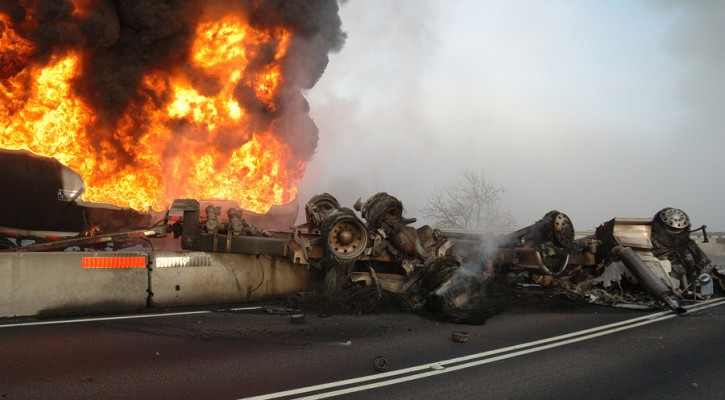May: Month of the Motorcycle
May 1, 2014
May is Motorcycle Awareness Month, and states across the U.S. are unleashing their public awareness campaigns to promote motorcycle safety.
In Texas, officials encourage motorcyclists to look out for each other, and have posted “Share the Road” and “Look Twice” signs to remind drivers to be safe as motorcycles increasingly come out of hibernation. Meanwhile, up in the north Michigan Secretary of State is promoting motorcycle safety by hopping on his Harley-Davidson Sportster and riding with a group of fellow motorcyclists. Governors, legislators, and average citizens are joining ABATE (American Bikers Aimed Toward Education) in conferences and events to promote the month of the motorcycle, with a great emphasis on biker safety and sharing the road.
Here are some helpful tips for motorists on the road during May’s Motorcycle Awareness Month:
- Always double-check mirrors and blind spots before changing lanes
- Look twice before pulling out of parking lots and driveways, or when turning at intersections
- Use those blinkers! Turn signals should be used when changing lanes, merging with traffic, or making turns
- Don’t be fooled by a flashing turn signal on a motorcycle – motorcycle signals are often not self-canceling. Wait to be sure the motorcycle is going to turn before you proceed.
- Give motorcycles more following distance, since they are capable of braking quicker and are more vulnerable in emergency situations
And, we have several important safety reminders for motorcycle riders as well:
- Wear a DOT-approved helmet
- Never ride while impaired
- Always signal turns, merges and lane changes
- Wear brightly colored protective gear, but ride as if you are invisible
- Avoid blind spots
The Case Against Left-Hand Turns
May 1, 2014
The left-hand turn is an essential skill that we all must master. However, learning how to avoid left-hand turns may be equally important. To make the case, we’ve rounded up a few interesting, and frightening, facts about turning left:
- 53.1% of crossing-path crashes involve left turns. Only 5.7% involve right turns.
- According to a study by NYC transportation planners, left-hand turns are 3X more likely to cause a deadly crash involving a pedestrian than right-hand turns.
- 36% of fatal motorcycle accidents involved a vehicle turning left in front of a motorcycle. Considering that nearly half of motorcycle accidents are single-vehicle (meaning the rider was the only one involved), that 36% is quite a significant number.
These statistics are often considered when city planners hit the drawing board. Many transportation systems use round-abouts to avoid the left-turn problem, while others are considering the more innovative “diverging diamond interchanges“.
Whether or not your own city has developed solutions to the left-turn dilemma, you can always use the old “three rights makes a left” maneuver when navigating through high-traffic and pedestrian-heavy areas such as downtown. In fact, this method can improve time and efficiency when the streets are especially congested.

Role Reversal
April 22, 2014
We have talked about the importance of parents setting a good example for their teen drivers. Parents should avoid cell phone use, distractions, aggressive driving, and speeding, and of course, always buckle up.
However, equally important is the teen’s ability to recognize these bad driving habits. Rather than the parent critiquing the teen, teens should critique their parents while behind the wheel. This is a fun game, especially for teens. Parents can learn how it feels to be judged while driving, and teens can learn to recognize driving mistakes.
Distraction Checklist
April 21, 2014
Don’t become another teen statistic or adolescent cliche by driving while distracted. Car crashes are the leading cause of death for young people, and multi-tasking while behind the wheel is a big contributor to teen driver crashes. So, keep that compulsive behavior in check by reviewing this common list of driving distractions.
1. Music. Find your station, CD, or MP3 playlist before leaving the driveway and never take your eyes off the road for your audio-obsession. You can always change the station at a stoplight if necessary.
2. Friends. Having other people in the car drastically increases a teen’s crash risk. So, don’t let your friends become a distraction or force for peer pressure. Drive the same way you would with parents or a driving instructor.
3. Food. Eating in the car is never a good idea. In fact, fast food in general is pretty terrible. Save yourself the calories, acne, and stomach ache by eating real food at a real restaurant.
4. Phone. Just put that phone in the back seat and forget about it. Texting and talking on the phone are a serious distraction for people of all ages.

The Route 24 “Horror Show”
April 21, 2014
There are many horrible places to drive in this country, and Route 24 in Massachusetts is one of those. In fact, students at the Parker Professional Driving School in Avon are warned about this stretch of road specifically. It’s a dangerous drive for novice and experienced truckers alike, with speeders and aggressive drivers making life difficult for everyone on the road. See the full story here:
http://www.enterprisenews.com/article/20140420/NEWS/140429664/12145/NEWS/?tag=1
Hands-Free is not Risk-Free
April 14, 2014
Learn why cell phone use is dangerous even if it’s on a hands-free device. The Teen Safe Driving blog has the full story here:
http://teensafedriving.org/blog/hands-free-is-not-risk-free/
Lane Change Etiquette
April 14, 2014
If you want to change lanes in traffic, you need to know how to do it correctly. Official laws concerning lane changes can vary from state to state, but for the most part, police will readily pull over any driver that changes lanes in a dangerous manner. For this reason, it’s best to learn all the nuances of lane-changing etiquette.
Never change lanes in a blind spot. This is especially important when changing lanes next to larger trucks and 18-wheelers. Instead, try to change lanes before you hit their blind spot, or continue in your own lane until you pass their blind spot. Remember, if you can’t see their mirrors then they can’t see you.
Always check your blind spot. After checking your mirrors and making sure your vehicle is a safe distance from those ahead of you, take a quick glance over your shoulder to check your blind spot before changing lanes.
Use your blinkers. They are there to warn other drivers of the direction you intend to go. Police are always on the lookout for drivers weaving between lanes without blinkers, making the highways more dangerous for everyone around.
Don’t tailgate. There is no reason to tailgate a vehicle before switching lanes to pass them. It’s not smart, it’s certainly not safe, and you can actually get ticketed for it. If you notice that the driver ahead of you is moving at a slower pace, then prepare to switch lanes before you are riding their bumper.
Don’t cutoff other vehicles. This is an offense that puts people’s lives in danger, and if an officer sees you cutting off another driver they will ticket you for either a) reckless driving, b) unsafe lane change, or c) aggressive driving. These can be serious offenses, which result in a greater number of marks on your record and higher insurance rates.
Don’t linger in the fast lane after passing a vehicle. If you have changed lanes to pass another vehicle, then move back over after you can see both of their headlights in your rearview mirror. This allows other vehicles to use the fast lane for passing, aiding in traffic flow and making the highway safer for all drivers. Plus, many states have made it illegal to obstruct traffic by cruising in the left lane.
Following these rules of the road will not only make you a safer driver, but also a smarter and more courteous driver, which makes the roads safer and more pleasant for everyone involved.
Most Dangerous Roads in America
April 13, 2014
Before you head out on the road this summer, it couldn’t hurt to read this article on the 10 most dangerous roads in America. Just because you’re avoiding the urban areas for more scenic rural routes doesn’t necessarily mean you’re home free. See the full story here:
http://www.popularmechanics.com/cars/news/10-of-americas-most-dangerous-roads#slide-1
10 Things You Don’t Know About Teen Drivers
April 13, 2014
There are a lot of risks to face out there on the open road, especially as a new driver. However, knowing a few facts and numbers can help both parents and teens to be more cautious and make safer decisions behind the wheel. Here are 10 things you probably did not know about teen drivers:
1. The first twelve months of driving are the most dangerous time in a teenager’s life.
2. Even after the first year, and after teens turn into 20-somethings, the risk of a crash remains extremely high. For this reason, the road can remain a dangerous place, and auto insurance rates will remain high as well. In fact, the risk of being a young driver doesn’t significantly decrease until the age of 25.
3. Teens don’t always take more risks than other drivers. In fact, the most common reason for teen crashes is inexperience rather than risky behavior.
4. Teen drivers are 3X more likely to crash than experienced drivers.
5. Three or more passengers increase a teen drivers crash risk by 4X.
6. Most fatal nighttime crashes happen before midnight.
7. More than 50% of teens killed in car crashes were not wearing a seatbelt.
8. Most states have inadequate teen driving laws and restrictions to protect teens from common crash risks.
9. Teens get their driving habits from their parents.
10. Among other gender differences, teen boys are 3X more likely to drive aggressively when there’s a girl in the car.
Signs of a Bad Mechanic
April 13, 2014
We all need a trustworthy mechanic to work on our vehicles. However, the task of hunting down a good mechanic can be daunting. Begin by reviewing the 4 warning signs of a bad auto mechanic, courtesy of Angie’s List:
http://www.angieslist.com/articles/4-warning-signs-bad-auto-mechanic.htm
